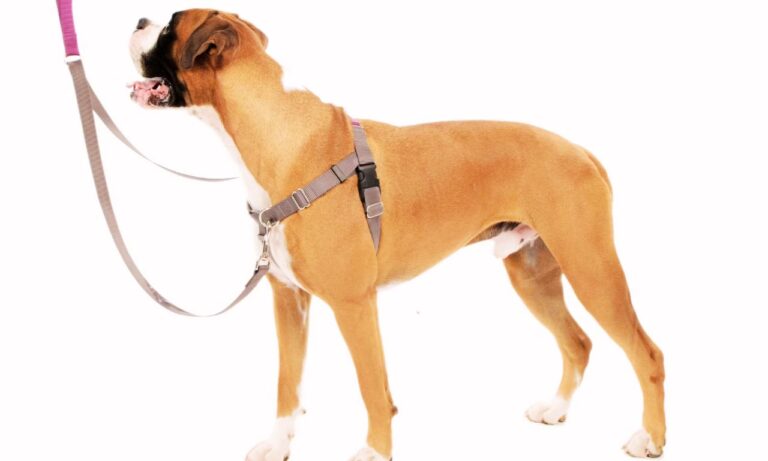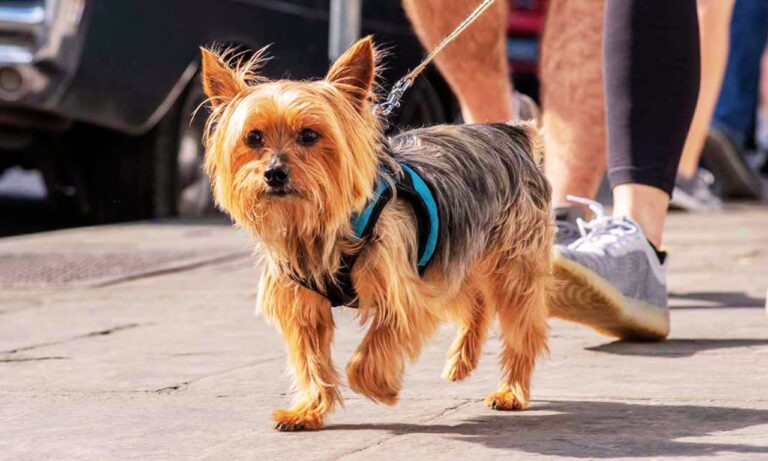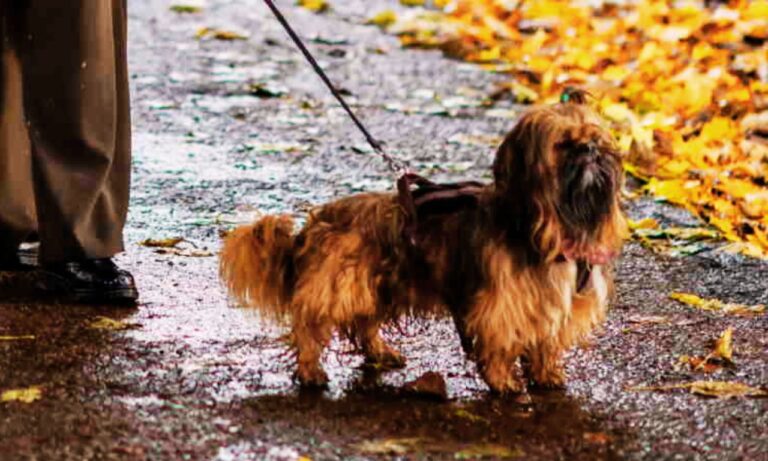Training a Bull Terrier, a breed known for its strength, loyalty, and sometimes stubborn nature, requires patience, consistency, and the right tools. A collar is one of the most important tools for effective training, offering control, guidance, and an avenue for positive reinforcement. So, how to train a Bull Terrier with the right collar? Discover the best collars for Siberian Huskies for both style and comfort.
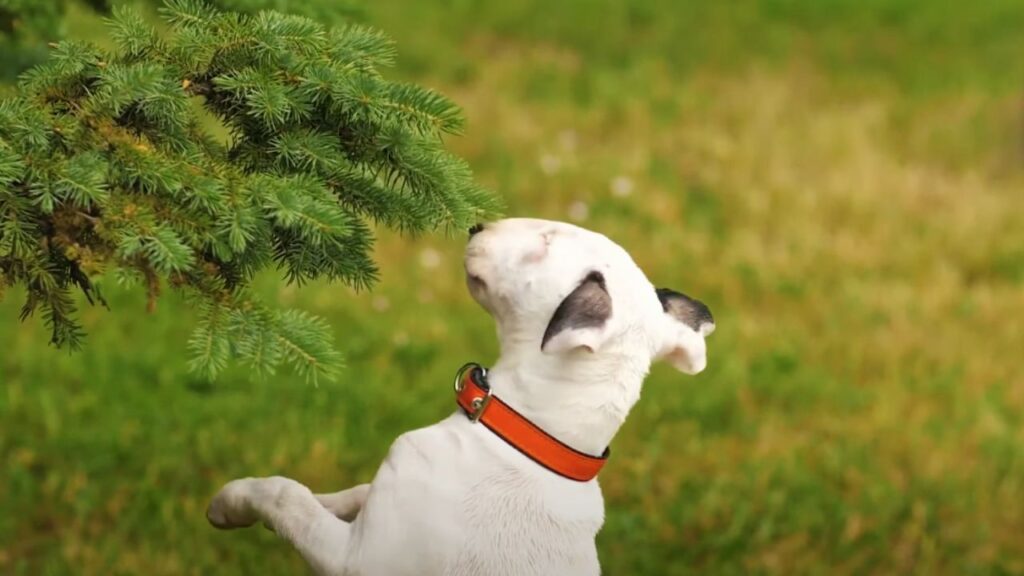
Blog Highlights
ToggleIs It Easy to Train You Bull Terrier?
Training a Bull Terrier can be challenging due to their strong-willed and energetic nature, but with consistency, patience, and positive reinforcement, they can learn effectively. Early socialization and proper use of training tools, like the right collar, make the process smoother.
How to Train a Bull Terrier with the Right Collar | Step By Step
Choosing the correct collar and understanding how to use it effectively is critical in developing a well-behaved, responsive Bull Terrier. Here’s a step-by-step guide on how to train a Bull Terrier with the right collar.
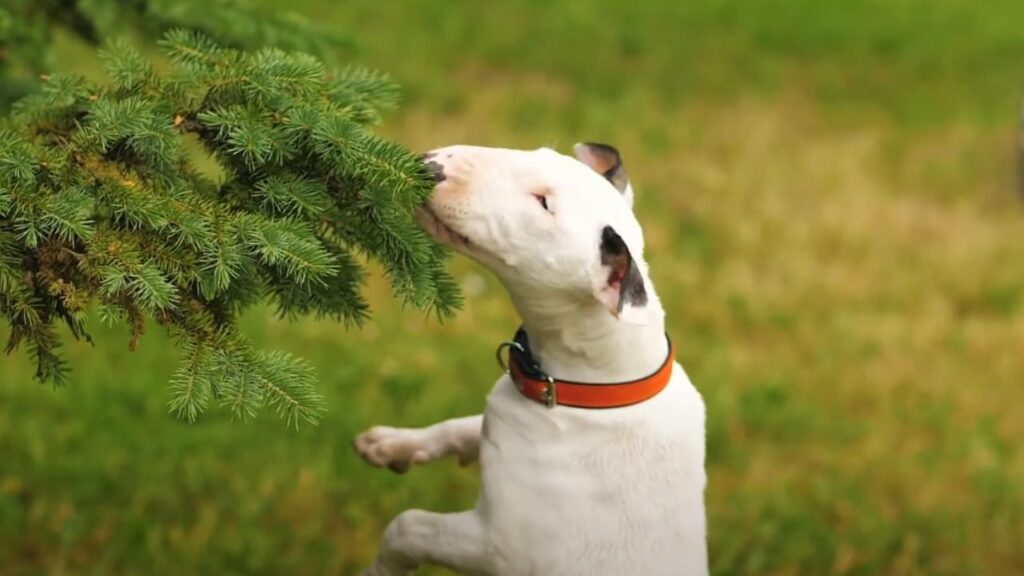
1. Choose the Right Collar
Before you begin training, selecting the appropriate collar is essential. For Bull Terriers, two types of collars are often recommended:
- Flat Collar: A simple flat collar is ideal for everyday use and basic training. It’s comfortable for the dog and suitable for teaching basic commands like “sit” and “stay.”
- Martingale Collar: This collar is excellent for dogs prone to pulling, as it tightens slightly when the dog pulls but doesn’t choke. It’s ideal for Bull Terriers due to their strength and tenacity.
Always ensure the collar fits properly—snug but not too tight. You should be able to fit two fingers between the collar and your dog’s neck. Learn how to put a collar on a Husky with these practical tips.
2. Introduce the Collar Gradually
Some Bull Terriers may initially resist wearing a collar, especially if they aren’t used to it. Start by allowing your dog to wear the collar for short periods around the house, associating it with positive experiences like playtime or treats. This helps them get comfortable with the sensation without associating it with restrictions.
3. Teach Basic Commands Using Positive Reinforcement
Bull Terriers respond exceptionally well to positive reinforcement training methods. This means rewarding them with treats, praise, or a favorite toy when they follow a command or exhibit the desired behavior. Commands like “sit,” “stay,” and “come” should be the first things you teach. Start in a distraction-free environment and work with your Bull Terrier using a flat or martingale collar.
For instance, while using the “sit” command, gently pull upward on the leash attached to the collar and push down slightly on their hindquarters. As soon as they sit, reward them with a treat and verbal praise. Repeat this consistently.
4. Leash Training: Walk without Pulling
Bull Terriers are strong, and if they haven’t been leash-trained, walks can become a battle. Begin leash training with a properly fitted collar and a short, non-distracting leash. The goal is to teach your Bull Terrier to walk beside you calmly, without pulling.
- Loose Leash Walking: Start by holding the leash loosely and begin walking. If your dog pulls ahead, stop walking immediately. When they stop pulling and return to your side, resume walking and reward them with praise or treats. Consistency is key—your dog will soon learn that pulling results in a pause, while walking calmly by your side leads to forward progress.
For dogs that pull excessively, a martingale collar or even a head collar can provide additional control without causing harm. Find out the best collars for Cane Corsos to suit their unique needs.
5. Incorporate Clicker Training
Clicker training can enhance your Bull Terrier’s learning process. A clicker is a small device that makes a sound when pressed, signaling to your dog that they’ve performed the correct action and will be rewarded.
Start by associating the clicker with treats, and once your dog understands that the click sound leads to a reward, use the clicker during training sessions. For example, when teaching your dog to “stay,” click the moment they hold the position, followed by a reward.
6. Socialize Early and Often
Socialization is critical for Bull Terriers, who can sometimes become anxious or aggressive around strangers or other dogs if not properly trained. Take your Bull Terrier out into various environments and expose them to different people, sounds, and situations while on a leash. The collar gives you control, allowing you to correct undesirable behaviors like lunging or barking with a gentle pull and then redirect their attention to you for a treat.
7. Train for Recall Using the Collar
Teaching your Bull Terrier to come when called, or “recall,” is essential for safety and obedience. This is where the collar plays a crucial role in keeping your dog under control. Start in a quiet environment with little to no distractions.
Attach a long leash to the collar, crouch down, and call your dog’s name excitedly, followed by the command “come.” Gently pull on the leash if necessary. When your dog comes to you, reward them immediately. Gradually practice in more distracting environments, always making “come” a positive experience. Explore the Cane Corso growth and weight chart and nutrition plans.
8. Correct Behavior Gently
Bull Terriers are sensitive to their owner’s emotions, and harsh corrections can lead to anxiety or aggression. Avoid yanking on the collar or shouting during training. Instead, use the collar to guide and redirect your dog. For example, if they start jumping on visitors, gently pull them down using the collar while giving the “sit” command, then reward them when they comply.
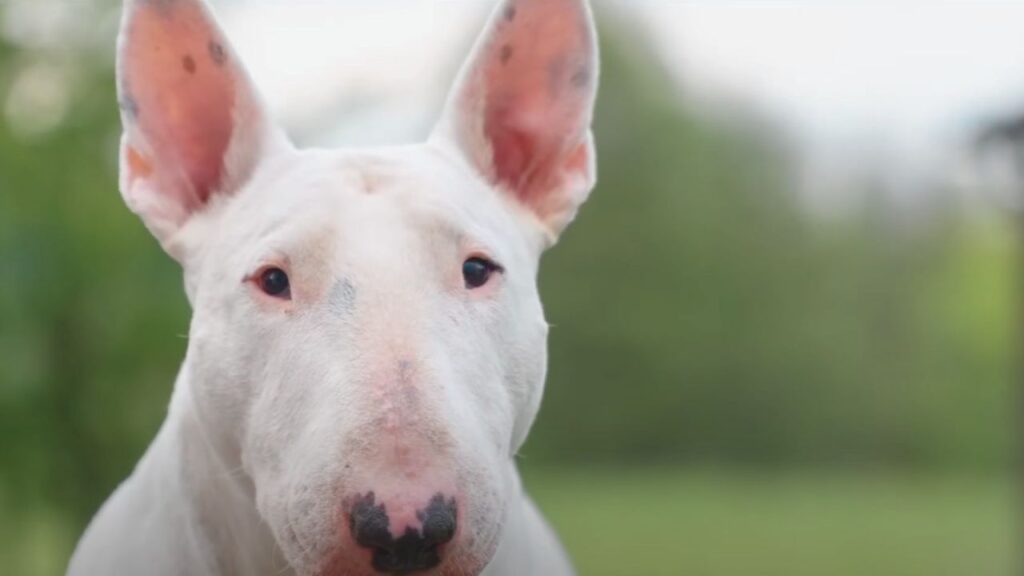
9. Keep Training Sessions Short
Bull Terriers can be playful and energetic, which means they may lose focus quickly. Keep your training sessions short—10 to 15 minutes—so your dog stays engaged. Several short sessions throughout the day are more effective than one long session.
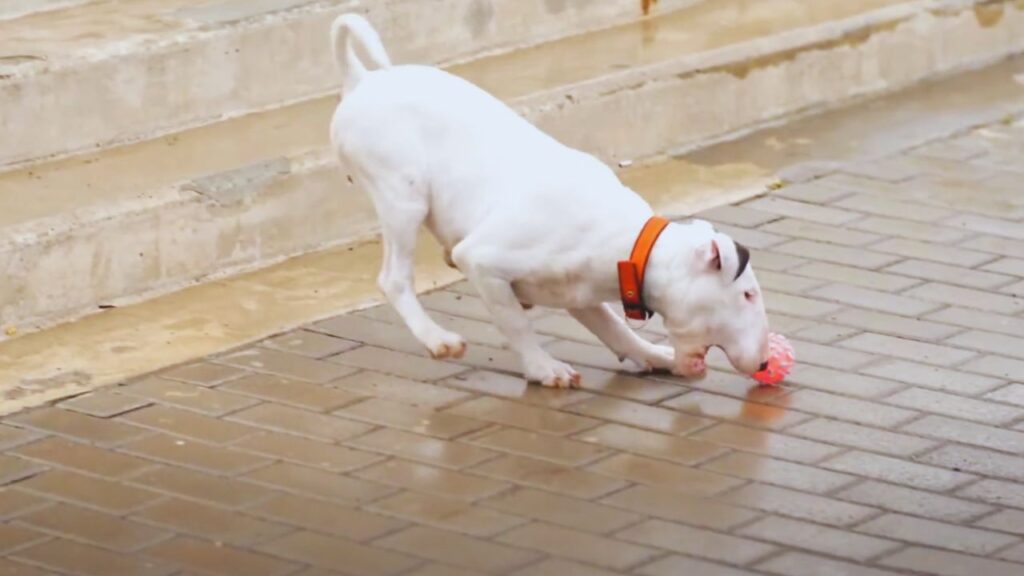
10. Be Consistent and Patient
Consistency is crucial in training any dog, but especially a Bull Terrier. Use the same commands, tone of voice, and reinforcement techniques across all training sessions. If multiple people are involved in training, ensure they all follow the same methods to avoid confusing the dog. Remember, patience is key—Bull Terriers are intelligent but can be slow to learn more complex commands, so repetition and positivity will pay off in the long run
Why Train Your Bull Terrier | 3 Reasons to Train Them!
Training your Bull Terrier is essential for many reasons beyond just ensuring a well-behaved pet. As a powerful and energetic breed, Bull Terriers require mental and physical stimulation to thrive in a family environment. Without proper training, their natural instincts can lead to unwanted behaviors such as excessive pulling, aggression, or destructive tendencies. Let’s delve into why training is so important for both the dog and the owner.

1. Ensures Safety for the Dog and Others
One of the primary reasons to train your Bull Terrier is to ensure safety, both for the dog and the people or animals around them. Bull Terriers, being a muscular and strong breed, can accidentally harm others if not properly trained.
For example, leash training is essential to prevent your dog from lunging or pulling on walks, which can lead to accidents or encounters with other animals. Proper training in commands like “sit,” “stay,” and “come” also enables you to control your dog in public places, reducing the risk of mishaps.
Training your Bull Terrier to respond to recall commands is another crucial safety measure. It can prevent your dog from running into dangerous situations, such as traffic or unfriendly dogs. A well-trained Bull Terrier will stop or return to you when called, which can be life-saving in emergencies. Determine the ideal collar size for a Bernese Mountain Dog with this guide.
2. Reduces Behavioral Problems
Bull Terriers are known for their strong personalities and, if left unchecked, can develop behavioral problems such as jumping on people, chewing furniture, or excessive barking. Proper training channels their energy into constructive activities, reducing destructive behaviors. Training also helps address common behavioral issues like separation anxiety, aggression, or excessive guarding tendencies, which are prevalent in the breed if not managed.
Training establishes clear boundaries for your Bull Terrier, teaching them what is acceptable and what isn’t. This clarity reduces confusion for the dog and prevents the development of bad habits. For instance, training your dog not to bite or jump on guests fosters a more relaxed and pleasant home environment.
3. Enhances the Bond Between Owner and Dog
Training your Bull Terrier not only makes life easier for you but also strengthens the bond between you and your pet. Dogs, including Bull Terriers, thrive on structure and enjoy learning new things, especially when it involves interaction with their owners. Training sessions can be a form of positive interaction that fosters trust and respect.
Moreover, Bull Terriers are eager to please their owners, and positive reinforcement during training helps build a strong, trusting relationship. Dogs that feel connected to their owners are more likely to obey commands, making for a more harmonious relationship. Explore if mountain dogs are good pets and suitable for your home.
Wrapping Up!
Training a Bull Terrier with the right collar is a rewarding process that strengthens the bond between you and your dog. By choosing the appropriate collar, introducing it gradually, and using positive reinforcement techniques, you can guide your Bull Terrier toward good behavior and obedience. Hope so, now you know how to train a Bull Terrier with the right collar.
Stay consistent, patient, and always make training a fun and engaging activity for your dog. With time and dedication, your Bull Terrier will learn to respect the collar and respond reliably to your commands. Understand if the Cane Corso is a high-maintenance dog with this insightful guide.


